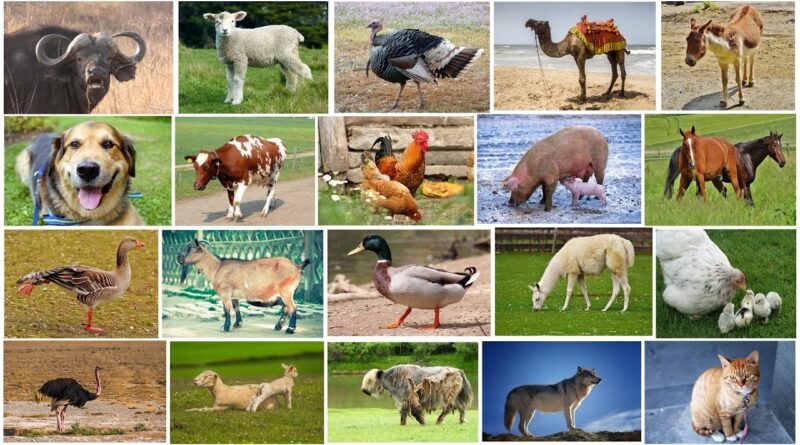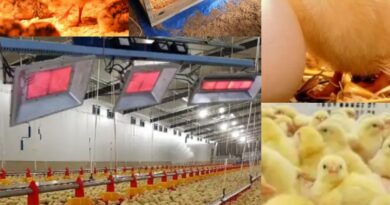The Concept of Animal Production on Agriculture
Animal production is an aspect of agricultural production and there are different types of agriculture. Agricultural science is simply defined as the art and science of crop, animal and fibre production for human consumption.
In the study of the broad subject of agriculture, they can have different specializations ranging from agricultural economics, Farm machinery and some other aspects of agribusiness which enhances agricultural development.
As a branch of agriculture, animal production deals with production of domesticated animals other than pets and game animals.
As a subject matter it has roots in the natural sciences in agric not only by the application of basic principles of science but also in theoretical foundations.
Thus, animal production relates in certain aspects of Zoology, Pathology, genetics, microbiology, botany, biochemistry, chemistry, physics, statistics, mathematical and pharmaceutical science. All these aspects aim towards one target which is to enhance the production of agricultural products.
Read Also: Feed and Nutrition Management for Cattle
Since animal production form a central theme in the provision of essential human need, the evolution of its practices over time has benefited from skill and knowledge acquired through cultural and scientific techniques.
Both traditional and scientific skills have served useful purposes in the development and advancement of animal production.
While the traditional technique which involves the use of organic farming techniques or organic agriculture often evolves slowly over several decades; conservative; limited to a locality or group of people and possibly extended by ancestral linkage; the scientific techniques has proven to be more versatile, and considered as a better alternative approach. It is more dependable in conveying knowledge and skills from an individual or from one place to another.
Science-based skills much more than cultural skills are indeed more sustainable and profitable for individual farmers and nations applying them in their production activities or systems.
Far beyond meeting social, economic, nutritional and profitability targets application of scientific principles in animal production has sustained productivity to barely satisfy the present level of world demands for animal products.
Under the traditional practice and knowledge system, taboos, custom and beliefs and associated with production, processing and consumption of livestock and livestock products.
The Hindus religious sect of India, for example, forbid the slaughter of cattle and consumption of beef. Similarly in Nigeria, the Fulani cattle owners derive social dignity in terms of number or heads of cattle owned by an individual rather than the productivity of the herd.
Read Also: The Different Types of Manure and How they Work
In addition, same herders are traditionally bound to a specific coat colour or breed of animal inherited from their ancestors and may not permit introduction of a different coat colour or breed even if the latter offer superior desirable traits.
Acceptance of certain beneficial technologies for adoption has suffered from rigid adherence to certain traditional beliefs or practices not withstanding the potential advantages they hold.
The use of artificial insemination as a cheaper means of crossbreeding exotic (foreign) bulls with the local breeds of cows for instance was resisted and rejected by local herdsmen because they considered it un-natural to inseminate animals by artificial method and processes.
In some instances, the traditional skills have been of tremendous to support to the production and healthcare of animals especially in areas remote from access to orthodox drugs and healthcare services.
The use of herb and bark of tress for disease treatment or to lessen reproductive difficulties has been showed to be effective.
Indigenous knowledge has in recent time become an interesting subject of research study. However, limitations of extending the practices for wider adoption, ascertaining the quality of active ingredient, determining the application rate or preserving such materials have constituted a major constraint, besides the slow rate of their discoveries.
The application of scientific principles and skills on the other hand has surpassed these limitations, as it has made great impact on ensuring a successful farm management and has greatly improved production and productivity of livestock ( livestock farming ) starting from properly designed farm buildings with the aid of scientific principles; careful study of anatomy and physiology of the body systems of various livestock species; formulation of different feed, use of different required farm implements or agricultural machinery and nutrient requirement for varying production purposes or targets has been determined, and are in use which at the end of the day encourages sustainable agriculture.
Read Also: Comprehensive Step by Step Guide on SoyaBean Farming
On these principles diets are formulated and applied in accordance with body requirement of the class and specie of the animal.
In animal breeding, genetic studies have made provisions for crossing two or more breeds of animal with near predictable characteristics of the offspring, obtain higher hybrid vigour or determine how much of the character is heritable.
Closely related to this is the artificial insemination technology which evolved from the accumulation of scientific knowledge on reproductive physiology and anatomy of animals It is possible to collect and extend genetic material from a productive and proven male animal to artificially inseminate several other female animals far away from the environment of the bull or its generation,
New advances in biotechnology application in animal production suggest production of several offspring’s from artificial initiation of stem cell division into units, each of which is capable to grow into individual animal.
Several applications of scientific principles have evolve into skills and technologies with tremendous impact on improving animal production system, productivity and profitability.
One beauty of the application of science is the ease with which it can be extended over a wide geographical area, its potency to solve the problem being targeted and the assurance to bring results if the procedures are carefully followed as well as the fast rate of generating new discoveries.
Read Also: Planting, Growing and Harvesting Grapes



